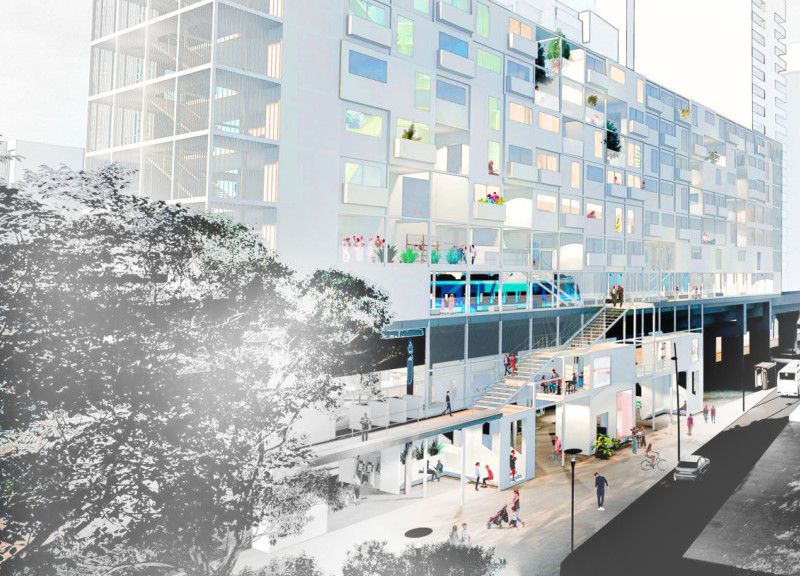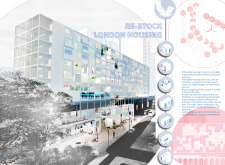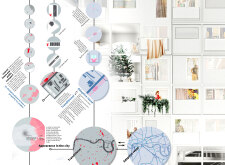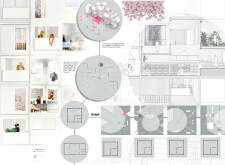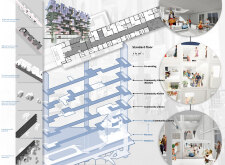5 key facts about this project
The project responds to the increasing demand for affordable housing in London, aiming to create a design that serves a wide range of income levels. The concept centers on a large variable building block that allows residents to customize their living spaces. Located near existing transportation hubs, it seeks to enhance urban accessibility while fostering a sense of community among those who live there.
Modular Living Spaces
Living units are designed to be modular, giving users the option to choose how many spaces they want to rent. Walls, floors, and bathrooms can be seen as interchangeable parts, allowing for personalization in the homes. This design offers flexibility, accommodating the diverse needs of individuals and families in a changing urban environment.
Integration with Transportation
A significant feature is the placement of the living units within transportation hubs. This location addresses urban density challenges and supports easier commuting for residents. Public transit access is updated and convenient, inviting people to engage more with their surroundings. It makes life simpler for those who might not own a car or prefer to use public transportation.
Community Spaces
The design also emphasizes the importance of public and private spaces. Communal areas are strategically located along the main passage, providing different functions that promote resident interaction. Amenities such as co-working spaces, a community library, a community kitchen, and nursery facilities cater to young families and individuals. This focus on community creates an inviting atmosphere that encourages social connections.
Adaptable Design Elements
Adaptability is a key aspect of the design, with standardized partition walls that offer flexible configurations. The intention is for the residential units to feel both functional and inviting. Thoughtful arrangement of these elements supports a lively and engaging environment. Each space is designed to meet contemporary needs while allowing for a personalized touch from each resident.


